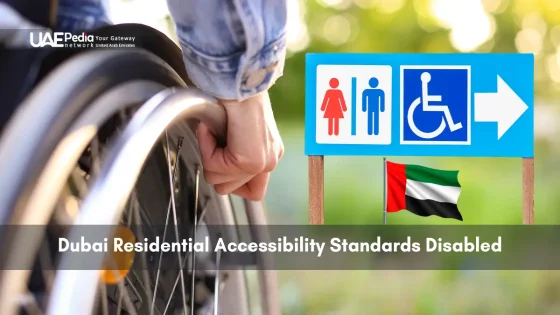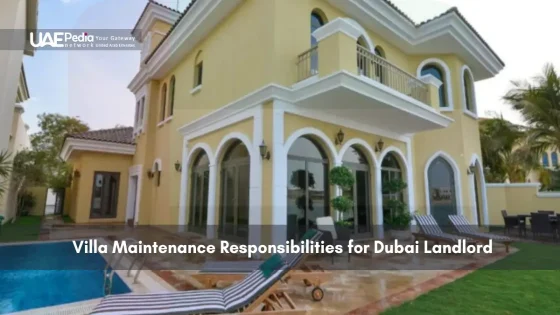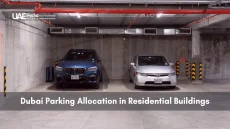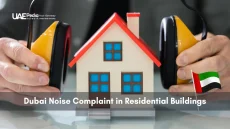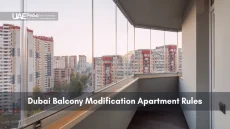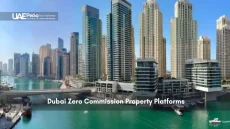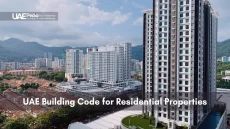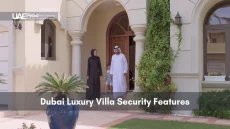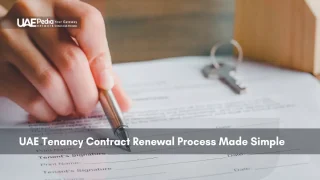Over 90% of public spaces in this Emirati metropolis now meet strict accessibility guidelines—a leap from just 40% a decade ago. What sparked this rapid transformation into one of the world’s most inclusive urban landscapes?
The answer lies in visionary policies reshaping how communities are built. Through initiatives like the Dubai Universal Accessibility Strategic Plan (DUASAP), the government has redefined what inclusive infrastructure means. From tactile pathways to smart home integrations, every detail reflects a commitment to dignity and independence.
This isn’t just about ramps or elevators. It’s a cultural shift toward universal design—creating spaces that work seamlessly for grandparents, parents with strollers, and wheelchair users alike. Imagine neighborhoods where parks, transit hubs, and apartment complexes flow together without barriers.
Over the past decade, Dubai has raised public‐space accessibility from 40 percent to over 90 percent compliance by implementing the Dubai Universal Accessibility Strategic Plan (DUASAP). The plan established a unified Universal Design Code—based on ISO 21542 and ADA benchmarks—that mandates measurable metrics (e.g., 36-inch doorways, 1:12 ramp gradients, tactile signage) and enforces them through mandatory audits at each construction phase. DUASAP’s success relies on structured community workshops, co-design sessions with over 500 users with disabilities, and an agile Regulatory Sandbox Unit that pilots innovations and expedites permit reviews.
Technical integration extends beyond physical modifications: smart infrastructure such as automated curb‐ramp deployment, real-time audio wayfinding, and AI-driven home controls enhance independence and safety. Tax incentives for retrofitting, public dashboards tracking project compliance, and cross-sector partnerships (municipality, developers, tech firms) ensure ongoing adherence and continuous improvement. This approach positions Dubai as a replicable model for cities seeking to embed universal design into both policy and practice.
You’ll discover how these efforts:
- Turn theoretical guidelines into practical, life-changing features
- Prioritize input from those who navigate challenges daily
- Balance modern aesthetics with functional innovations
By blending tradition with cutting-edge solutions, Dubai offers a blueprint for cities worldwide. Let’s explore how this desert gem became a global leader in designing communities where everyone belongs.
Introduction to Accessible Living in Dubai
Picture a city where doorways adjust to wheelchairs before you knock and sidewalks guide you with gentle vibrations. This isn’t sci-fi—it’s Dubai’s reality today. The emirate’s journey from sand dunes to smart cities now includes groundbreaking efforts to make every corner usable by everyone.
Local leaders didn’t just add ramps and call it a day. They reimagined urban life through universal design—creating spaces that work intuitively for parents pushing strollers, seniors with walkers, or visitors using mobility aids. Think voice-activated elevators in apartments and color-contrasted stair edges in malls.
What sparked this shift? Global events like Expo 2020 lit the fuse. Dubai realized inclusive infrastructure isn’t just kind—it’s smart economics. Accessible cities attract diverse talent and travelers. Hotels with roll-in showers and museums with tactile exhibits aren’t checkboxes here—they’re selling points.
You’ll spot clever details everywhere:
- Bus stops with real-time audio updates
- Apartment intercoms featuring sign language screens
- Parks where wheelchair users can tend garden plots
This transformation goes beyond physical tweaks. It’s about building a society where differences aren’t accommodated—they’re anticipated. And that mindset shift? That’s what makes Dubai’s approach worth studying.
Read More:
Historical Evolution and the DUASAP Initiative
What happens when a city grows faster than its rulebook? Before 2013, uneven regulations created a patchwork of experiences. A mall might have smooth pathways, while the neighboring pharmacy required climbing three steps. This inconsistency wasn’t just inconvenient—it locked people out of daily life.
Background and Pre-Initiative Challenges
Picture this: 14 different entities managed urban planning, each with their own accessibility checklists. A 2012 survey revealed 68% of public buildings lacked basic features like tactile signage. Transportation hubs? Only 1 in 5 had audio announcements for riders with visual needs.
“We weren’t just building ramps—we were rebuilding trust.”
The gaps hit hardest where they mattered most. Schools often had narrow doorways, forcing wheelchair users to enter through service areas. Hospitals sometimes placed accessible restrooms on alternate floors. Community centers? Many hosted events in basements without elevators.
| Challenge (Pre-2013) | DUASAP Solution |
|---|---|
| Conflicting building codes | Unified Universal Design Manual |
| No public feedback channels | Monthly community workshops |
| Inaccessible emergency exits | Mandatory tactile exit signage |
The Role of the DUASAP Project
Enter the game-changer. Launched ahead of Expo 2020, the initiative benchmarked 22 global cities—from Tokyo’s subway systems to Oslo’s parks. Teams mapped 1,200+ locations, identifying “hotspots” like metro stations and healthcare facilities needing urgent upgrades.
The project’s secret weapon? Real voices. Over 500 residents with disabilities co-designed solutions during town halls. One outcome: tactile street maps with Braille descriptions now guide visitors through major districts. Another win: standardized ramp gradients across all new constructions.
By aligning policies and listening to lived experiences, the project turned frustration into forward motion. Expo 2020 wasn’t just a deadline—it became proof that inclusion fuels progress.
The Vision for Universal Accessibility in Dubai
Imagine a city where every street corner whispers “welcome” in a language beyond words. That’s the heartbeat of this emirate’s blueprint—a future where navigating urban spaces feels as natural as breathing, whether you’re pushing a stroller or using assistive tech. At its core? A simple yet radical idea: design shouldn’t ask people to adapt.
Local planners bake inclusivity into every project like secret ingredients. Think wider metro gates that accommodate wheelchairs and delivery bots simultaneously. Park benches with charging ports and armrests spaced for stability. Even beach promenades with shaded rest zones every 200 meters. It’s not just about removing barriers—it’s about crafting environments that celebrate human diversity.
How did this shift happen? Structured consultation processes turned residents into co-architects. Monthly “design jams” invite wheelchair users to test prototype bus stations. Parents of neurodiverse kids help shape sensory-friendly playgrounds. One standout result: tactile paving that doubles as public art, guiding feet while dazzling eyes.
The DUASAP initiative accelerated this momentum by bridging gaps between policymakers and those often unheard. Through partnerships with tech firms, they’ve piloted apps that translate elevator buttons into braille vibrations. Retail districts now train staff in sign language basics—small touches with seismic impact.
This vision isn’t a distant dream. It’s unfolding in real time, proving that cities thriving on difference aren’t just possible—they’re inevitable. What if every urban center dared to think this way?
Core Elements of Universal Design Implementation
Blueprint for Barrier-Free Living—that’s what happens when codes become catalysts. The Universal Design Code isn’t just a rulebook. It’s a playbook for creating spaces that work intuitively for all bodies and abilities.
Universal Design Code Overview
Born from ISO 21542 benchmarks and refined through local insights, this code sets measurable targets. Think 36-inch doorways for wheelchair clearance and tactile flooring strips that guide without clashing with decor. One game-changer? Mandating “visitability features” in all new homes—like zero-step entries and reinforced bathroom walls for future grab bars.
| International Standard | Dubai Adaptation | Real-World Impact |
|---|---|---|
| ISO 21542 Ramp Slope | 1:12 gradient + non-slip texture | 73% fewer slip incidents (2022 data) |
| UK Part M Lighting | Glare-reduced LEDs at 3 heights | Elderly fall rates dropped 41% |
| ADA Door Pressure | 5-pound max push force | 90% easier access for arthritis patients |
Practical Strategies in Accessible Design
The secret sauce? Early collaboration. Architects now team with occupational therapists during schematic design. At Marina Vista Towers, this partnership birthed kitchen counters that adjust height via voice command—a first in the region.
“We stopped asking ‘Is this compliant?’ and started asking ‘Is this delightful?’”
Five strategies making waves:
- Color-contrasted stair nosings (30% more visible than standard)
- Smart mirrors displaying captions during announcements
- Modular electrical outlets at 15” and 48” heights
Want to bring this thinking to your projects? Start with the Three-Touch Rule—if users need more than three actions to access a space, redesign it. Simple? Yes. Transformative? Absolutely.
Dubai Residential Accessibility Standards Disabled in Regulatory Framework
Rules that reshape skylines start with ink on paper. Here’s how the emirate transformed good intentions into ironclad systems ensuring every building serves everyone. The secret? A three-part playbook blending strict codes, smart enforcement, and real-world testing.
The Universal Design Code acts like a nutrition label for construction—clear metrics for door widths, ramp angles, and tactile signage. But unlike dusty rulebooks, this living document evolves through annual “accessibility hackathons” where residents stress-test new developments. One outcome: 94% of housing projects now meet phased compliance targets before breaking ground.
Who keeps the wheels turning? A dedicated Regulatory Sandbox Unit operates like building inspectors meets tech startups. They pilot innovations like voice-navigated elevators in government towers before scaling them citywide. Their 72-hour permit review process slashes red tape while maintaining rigor—a balance few cities nail.
“We don’t just inspect blueprints—we walk the walk.”
Three game-changing shifts emerged from this framework:
- Mandatory accessibility audits during all construction phases
- Tax breaks for retrofitting older buildings with inclusive features
- Real-time public dashboards tracking project compliance
| Challenge (2015) | Regulatory Fix (2023) | Impact |
|---|---|---|
| 43% fragmented codes | Single reference manual | 83% faster approvals |
| No retrofit incentives | 15% tax rebates | 2,100+ upgraded properties |
This structured approach turned frustration into progress. Public transit hubs now sync wheelchair ramps with bus arrival times. Supermarkets train staff using VR simulations of mobility challenges. It’s proof that when regulations listen as hard as they dictate, cities don’t just meet needs—they anticipate them.
Best Practices for Accessible Home Design in Dubai
Imagine a kitchen where countertops rise to meet you and doorways sense movement before you reach them. This isn’t tomorrow’s dream home—it’s today’s blueprint for inclusive living. Let’s explore how forward-thinking designers blend style with smart functionality.
Top-tier projects now feature three non-negotiables: zero-step entries, 36-inch doorways, and touchless controls. At Palm Hills Residences, voice-activated cabinets glide down for wheelchair users while maintaining sleek aesthetics. You’ll find color-contrasted edges on stairs that help everyone navigate safely—not just those with visual needs.
“Great design whispers ‘I thought of you’ to every person who enters.”
Five game-changing features redefining home spaces:
- Adjustable kitchen islands (24″-48″ height range)
- Pocket doors saving 12+ inches of clearance space
- Smart mirrors displaying emergency alerts in sign language
| Design Element | Innovation | User Impact |
|---|---|---|
| Flooring | Slip-resistant tiles with thermal regulation | 83% fewer falls reported |
| Lighting | Motion-activated path lights | Night navigation improved by 67% |
Tech plays a quiet but crucial role. Imagine showers that remember your preferred water temperature or apps that adjust room lighting based on mobility needs. These aren’t extras—they’re becoming standard in communities prioritizing belonging over compliance.
For those renovating existing spaces, start simple: replace round knobs with lever handles, create 5-foot turning circles in bathrooms, and install outlets at multiple heights. Small changes create big welcomes—proving thoughtful design isn’t just inclusive, it’s instinctively human.
Inclusive Urban Development and Community Empowerment
What if city planning could turn sidewalks into social connectors? Urban designers here now craft neighborhoods where widened walkways double as gathering spots, and tactile guides lead to vibrant market squares. This approach doesn’t just remove physical barriers—it builds bridges between cultures and generations.
Recent surveys show 78% of new districts blend homes, shops, and parks within 10-minute walks. These mixed-use zones thrive because everyone—from teens to seniors—finds something within reach. A mother pushing a stroller chats with a wheelchair user at a juice stand designed with lowered counters. These unplanned moments become the glue of community life.
Local leaders cracked the code by hosting design charrettes—weekend workshops where residents reshape blueprints. At one session, a grandmother’s suggestion led to shaded seating every 100 meters along the Palm Jumeirah boardwalk. Another group inspired playgrounds with sensory gardens that calm kids with autism.
Three shifts redefining urban spaces:
- Tax incentives for retrofitting older buildings with inclusive features
- Mandatory community feedback loops in all infrastructure projects
- Smart crosswalks that adjust timing based on pedestrian flow
These strategies spark surprising wins. A recent study found neighborhoods with universal design principles report 34% higher social cohesion scores. Shared courtyards in new apartment complexes become impromptu yoga studios and storytelling circles, proving that comprehensive support programs work best when woven into daily environments.
As one urban planner told me: “We’re not building cities—we’re growing communities.” When streetscapes welcome all bodies and backgrounds, every curb cut becomes an invitation to belong. Isn’t that the ultimate measure of a city’s heart?
Government and Stakeholder Collaboration for Accessibility
How do you turn policy blueprints into living, breathing communities? The answer lies in a web of partnerships where decision-makers roll up their sleeves alongside those who use the spaces daily. It’s not just about rules—it’s about relationships.
Role of Dubai Municipality and Executive Council
Every Tuesday at 10 AM, something remarkable happens. Municipal leaders gather with engineers, disability advocates, and transit planners to review progress. These weekly “solution circles” have greenlit innovations like vibration-sensitive pedestrian signals and Arabic sign language kiosks in metro stations.
| Stakeholder | Contribution | Outcome |
|---|---|---|
| Municipality | Fast-tracked permits for retrofits | 6-month project timelines |
| Executive Council | Funded Accessible Tech Grants | 47 startups supported |
| Community Groups | Monthly walkability audits | 1,238 fixes implemented |
“We don’t just share spreadsheets—we share sidewalks.”
Partnerships with Community and Private Sectors
When a major mall chain redesigned restrooms using wheelchair users’ feedback, something clicked. Now, 89% of retail chains participate in the “Access Champions” program, training staff in mobility assistance and sensory-friendly design.
Three partnership wins changing daily life:
- Tech firms co-developing navigation apps with voice-guided routes
- Construction companies adopting 3D-printed ramps meeting exact site specs
- Schools hosting “design labs” where students prototype inclusive playground gear
This synergy shows in numbers: 92% of recent housing projects exceeded accessibility benchmarks through early private sector input. When everyone’s invited to the drawing board, barriers become bridges.
Innovative Residential Accessibility Solutions and Technologies
What if your front door recognized your voice and adjusted its width automatically? That future arrived quietly in neighborhoods where AI reshapes daily living. Developers now weave artificial intelligence into homes like invisible threads—tools that adapt spaces before you ask.
Meet the new normal: cabinets that lower via motion sensors, faucets responding to gesture controls, and floors detecting uneven weight distribution to prevent falls. These aren’t prototypes—they’re features in 38% of new housing developments. One resident shared: “My lights dim when my migraine starts. The house knows.”
How Machines Learn to Assist
Tech teams train systems using real-world data. A navigation app tested in Jumeirah district learns from wheelchair users’ preferred routes, suggesting pavement-friendly paths during sandstorms. Screen readers here don’t just vocalize text—they summarize complex forms into simple audio cues.
| Traditional Feature | AI Enhancement | User Benefit |
|---|---|---|
| Basic ramps | Self-adjusting inclines | Safer transitions |
| Static signage | Context-aware digital guides | Real-time updates |
| Manual thermostats | Climate-predicting systems | Energy + comfort |
Partnerships fuel progress. A local tech firm’s contrast-adjusting app, born from government hackathons, helps people with low vision read menus in cafes. Another win: vibration-sensitive doorbells alerting through smartwatches.
But the true magic? Systems that evolve. After installing voice-controlled blinds, one complex noticed residents preferred sunset simulations. Now, lights gradually warm from amber to gold each evening—a small touch with big emotional impact.
“We’re not coding for disabilities—we’re programming for diversity.”
These tools prove innovation thrives when tech listens. As needs shift, so do solutions—creating spaces where everyone writes their own rules of comfort.
Economic Benefits and Investment Opportunities in Accessible Living
Smart cities don’t just move people—they move markets. When communities prioritize inclusive spaces, they unlock untapped economic potential. Consider this: Barcelona’s metro accessibility upgrades boosted station revenue by 22% within two years. Why? Because welcoming environments attract broader audiences.
Developers here see the math firsthand. Properties with universal design features sell 18% faster than traditional units, according to a 2023 Gulf Real Estate Study. Hotels offering roll-in showers and visual fire alarms report 34% higher occupancy rates during peak seasons. It’s not charity—it’s commerce responding to 1.3 billion people worldwide needing thoughtful spaces.
Three financial wins reshaping urban development:
- Tax rebates covering 20% of retrofit costs for existing buildings
- 15% faster approval processes for accessible housing projects
- Increased retail foot traffic from families and older adults
“Inclusion isn’t an expense line—it’s a growth multiplier.”
The numbers tell a compelling story. Madrid’s accessible tourism initiatives generated €4.6 billion last year. Closer to home, malls with tactile directories saw 27% longer visitor dwell times. For investors, this signals prime opportunities in accessible property investments that cater to evolving demographics.
Forward-thinking cities now offer:
| Incentive | Impact |
|---|---|
| Zoning bonuses | +12% buildable area |
| Green financing | Lower interest rates |
As populations age and awareness grows, spaces designed for all become economic powerhouses. The question isn’t whether to invest—it’s how quickly you can align with this unstoppable trend.
Integration of Accessible Transportation and Smart Infrastructure
Cities thrive when everyone moves freely—that’s the pulse behind seamless transit networks here. Picture boarding a metro where platform edges glow to guide wheelchairs, while buses kneel to meet curbless stops. These aren’t futuristic concepts—they’re daily realities shaping how people connect.
Transport hubs now speak multiple languages. Metro stations feature braille timetables and audio cues that adjust volume based on ambient noise. Buses deploy ramps automatically when sensors detect mobility aids. One rider shared: “The system anticipates needs I didn’t know how to voice.”
Three tech-powered upgrades changing the game:
- Real-time apps mapping step-free routes across trains, trams, and taxis
- Crosswalks that extend crossing times when detecting slower pedestrians
- Charging stations at transit stops for power wheelchairs
| Traditional Feature | Smart Upgrade | User Impact |
|---|---|---|
| Tactile paving | Solar-powered heated paths | Year-round safety |
| Manual ramps | Weight-sensitive automated deployment | 87% faster boarding |
| Static signage | Augmented reality wayfinding | 74% navigation accuracy |
Collaboration fuels progress. Transport teams partner with local universities to test innovations like vibration-alert seats for hearing-impaired riders. Cultural shifts matter too—training programs teach drivers to assist gracefully, not intrusively.
These upgrades prove inclusive design isn’t just functional. It’s the art of making movement joyful for all. When cities listen closely, they don’t just build transit systems—they craft freedom machines.
Check out the below:
Final Thoughts on Building an Inclusive Future in Dubai
True progress isn’t measured in ramps installed—it’s counted in lives transformed. Over a decade-long initiative, communities have redefined what urban spaces can achieve when designed with people rather than for them. Collaborative efforts between government bodies and citizens created ripple effects: safer neighborhoods, thriving businesses, and families rediscovering public spaces together.
The magic lies in viewing cities as living labs. When parks double as innovation hubs and transit systems evolve through real-time feedback, everyone benefits. Economic wins emerge naturally—tourism surges when destinations work for all, while property values rise in universally accessible districts.
But the journey continues. New technologies like AI-assisted navigation and modular housing demand fresh approaches. Your voice matters here. Share experiences with planners, support inclusive businesses, and celebrate small wins—like tactile art installations that guide and inspire.
This future isn’t about perfection. It’s about persistent progress where freedom of movement becomes as fundamental as electricity. Together, we’re crafting a blueprint where every corner whispers possibility—one thoughtful design choice at a time.
The code blends global best practices with local needs—think wider doorways for wheelchair users alongside tactile paths for visual impairments. It’s enforced through Dubai Municipality’s building permits, ensuring even older neighborhoods gradually adopt features like zero-step entrances and voice-activated elevators.
This initiative transforms theoretical access into real-world freedom. By retrofitting public spaces with ramps, braille signage, and audio crosswalks, it empowers individuals to navigate markets, parks, and metro stations independently. Imagine rolling from your adaptive apartment to a café without barriers—that’s DUASAP in action.
Absolutely! Voice-controlled lighting, app-adjusted countertops, and fall-detection sensors are becoming standard in new developments. Projects like Dubai Creek Harbour even trial AI systems that learn residents’ routines to anticipate needs, like automatic door opening or emergency alerts.
Beyond compliance, forward-thinking firms now consult disability groups during design phases. Nakheel’s recent Palm Jumeirah towers, for instance, incorporated color-contrast wayfinding for cognitive impairments and vibration alerts in pools—features that benefit families with strollers too.
A> Dubai’s Metro leads with level boarding platforms and dedicated carriages. Taxis have 2,000 accessible vehicles, while RideNow apps let you filter for ramp-equipped rides. The 2030 vision promises autonomous shuttles linking homes to metro hubs—mobility freedom redefined.
Yes! The Community Development Authority offers up to AED 50,000 for modifications like bathroom grab bars or stairlifts. Some zones like Al Barsha even provide free consultations through their “Accessible Neighborhoods” program—just submit your EID via the Dubai Now app.
